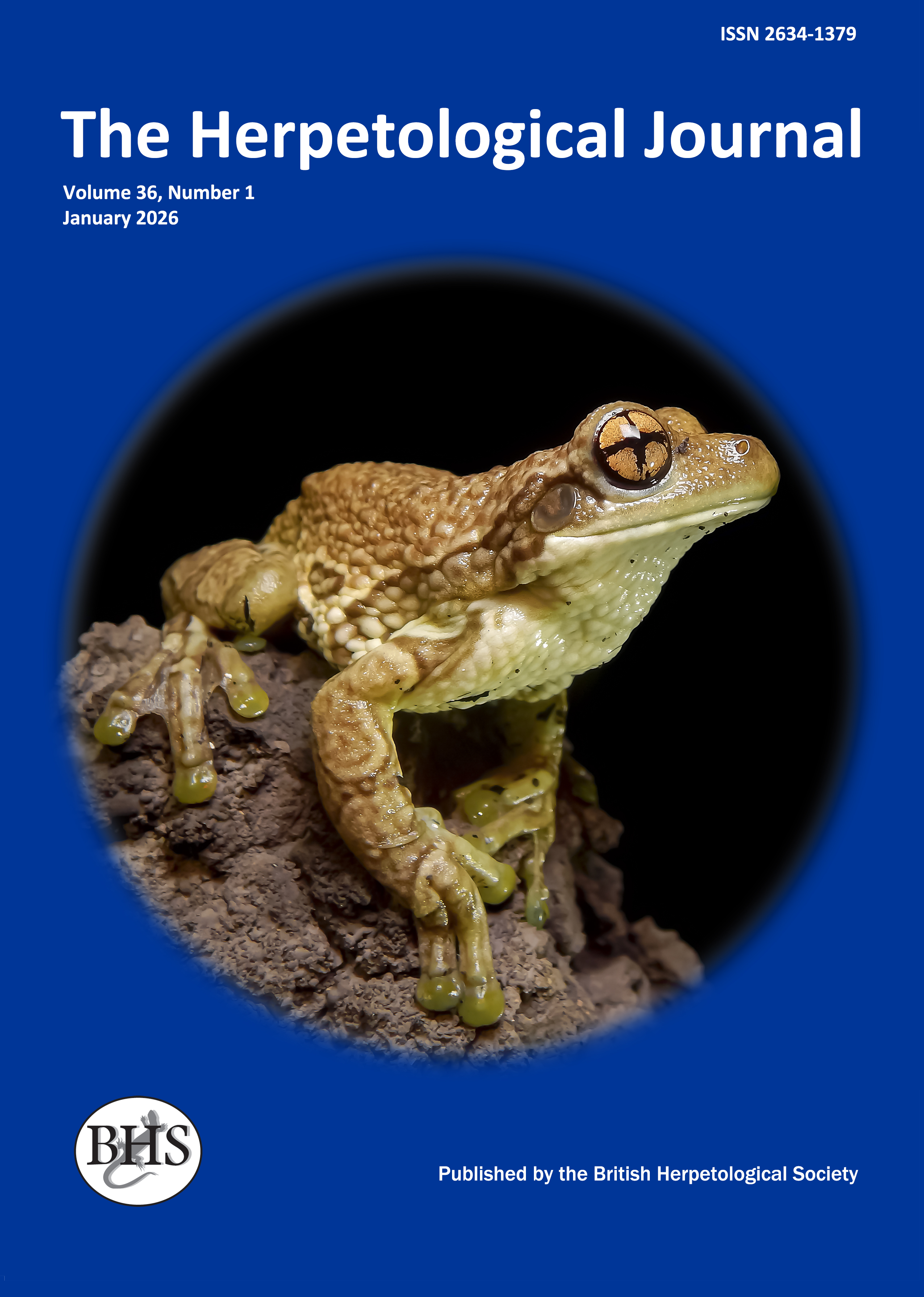
The Herpetological Journal
The Herpetological Journal is the Society's prestigious quarterly scientific journal. Articles are listed in Biological Abstracts, Current Awareness in Biological Sciences,Current Contents, Science Citation Index, and Zoological Record.
ISSN 0268-0130
2023 Impact Factor for the Herpetological Journal is 1.1, with the Journal sitting just below Quartile 2 in Zoology, at percentile 46.9
pdf 06. Food consumption, thermoregulation and ecology of the skink Chalcides bedriagai
1686 downloads
Open Access
pp.144-153
Authors: E. Hailey, E. A. Rose and E. Pulford
Abstract: Chalcides bedriagai were found to live under rocks, mostly at body temperatures between 25-35°C, and were active between mid-March and mid-October. Population density (excluding juveniles) was 42 Ha-I in an abandoned field habitat, 990 Ha-1 in the utilised sub-habitat. Larger females had more young (overall range 1-6 per year), but offspring size and relative clutch mass (mean 0.37) were independent of maternal size. Escape success was linearly related to substrate temperature (T5), ranging from 0 at l 7°C to 0.5 at 37°C. Pregnant females were found under rocks with higher T5 than other adults, and had reduced food intake. Food consumption of adults in summer was estimated from the production of urates as 12mg dry weight.g live weight-I .day-1. This is similar to that of a cool temperate lacertid and a tropical nocturnal gecko, but only half that of a warm temperate lacertid. Energy expenditure on hibernation, maintenance and activity was estimated from the annual temperature profile and values of metabolic rate. Estimates were also made for energy used in reproduction, growth and sloughed skins. The total annual budget suggested an average daily food intake only half of that estimated in summer, and half of that expected from a general relation for active lizards in warm climates.

